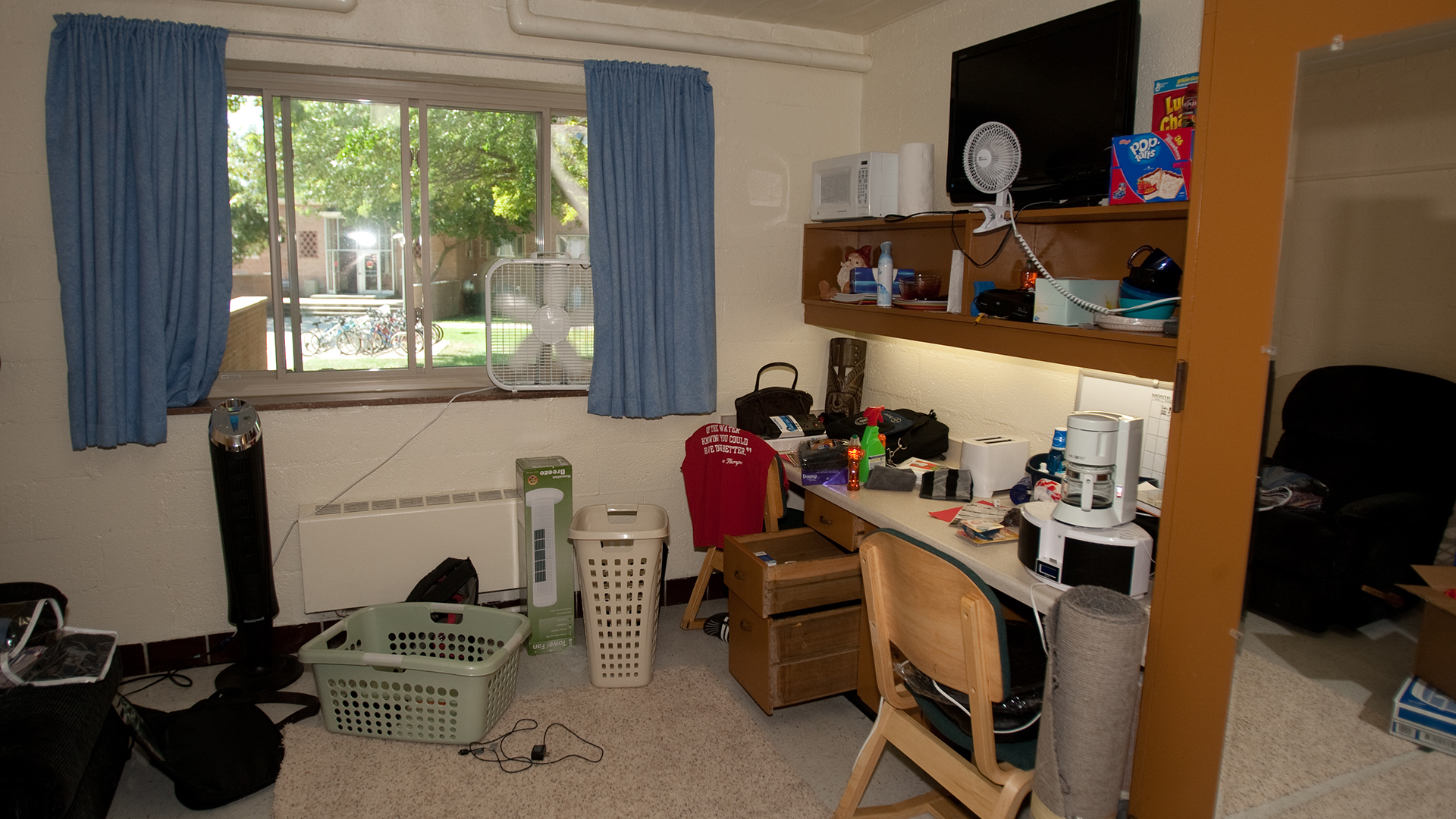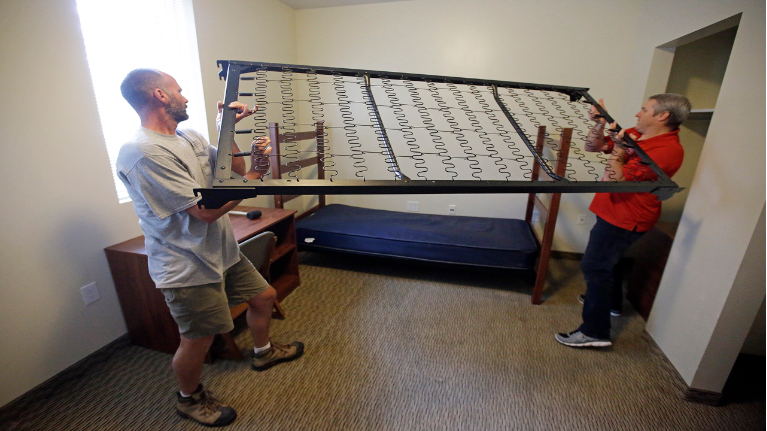DELAWARE, Ohio — When students arrive to campus at Ohio Wesleyan University in the fall, before being greeted by jubilant resident assistants, unloading their belongings in their dorms, and connecting with their classmates, they will first get swabbed for COVID-19.
Those who test positive will be stopped from proceeding with the move-in process and given two options: Go home to your permanent residence for a few weeks or enter isolation housing.
Colleges are keeping a number of rooms in their residential spaces unoccupied so that students who test positive for COVID-19 or are awaiting test results can separate themselves from the rest of the student body while they study online or focus on their health if they are too sick to study. Even meals will be delivered to them. Schools said these spaces are an essential part of their plans to contain the spread of COVID-19 when school resumes in the fall.
Housing officials made a distinction between “quarantine” and “isolation” housing. Quarantine is for students awaiting test results, which could take a number of hours or possibly several days. Isolation is for students who have tested positive and need to be separated for about two weeks.
For students who test positive, being separated from their classmates for two weeks in a barren room while dealing with possible symptoms of COVID-19 is certainly an unfortunate prospect, but it may be a better option than returning home to their families and potentially putting them at risk of contracting the coronavirus. And it may be the only option for those who live more than a driving distance from campus, as flying with COVID-19 is disallowed.
In addition to offering quarantine spaces, colleges are “de-densifying” residential halls. Lara Conrad, director of residence life at Ohio Dominican University, said that this is happening naturally, to an extent. Some students are self-selecting to take all their classes online at home from their permanent residence, reducing the expected occupancy rate for campus housing.
Schools are also procuring additional spaces for students to live on campus, as well as off campus. Columbus College of Art & Design pursued a “master lease” with three private apartment properties. The school will house students there to reduce the numbers of students in its two residential halls. Other schools have asked students to find private apartments off campus on their own.

De-densifying also means reducing dorm room capacities, as well as the capacities of study areas and common lounge spaces in dorm buildings. Dorm parties or even small dorm room gatherings will not slide this year, and any visitors who are permitted will be expected to wear masks.
Conrad said the school is rearranging dorm room furniture so students who are sharing a room are a bit farther apart at night. Students will be encouraged to sleep with their heads on opposite end of their rooms, she said.
CCAD and ODU have had discussions with hotels about options to expand their capacities if it comes to it. This could mean moving students to hotel rooms to free up more empty rooms in campus residence halls for quarantine and isolation.
Quarantine rooms will be used for people whom contact tracers determine have been exposed to a COVID-19 positive individual, perhaps athletics teammates, close friends, or comembers of a student group. Many roommates of students who test positive will need to get tested and quarantine. The Centers for Disease Control and Prevention consider close contacts to be anyone who was within 6 feet of an infected person for at least 15 minutes within 48 hours of that person’s COVID-19 test.
Director of residence life and housing for CCAD, Liz Gordon-Canlas, spent a couple nights earlier this summer in a campus housing apartment due to concerns about the protests in parts of Columbus. She was in the full swing of COVID-19 planning for the fall, and it offered a moment to reflect on how to make these spaces comfortable.
“It was a good chance for me to be inside an apartment that would look just like our isolation spaces, and to kind of ask myself, well, what would I want in here, if I couldn't leave? And then, what would I want if I were sick?” she said. “How do we support the mental health of students that would be isolating? We’ve been thinking about that all summer.”
CCAD is looking at stocking its isolation rooms with refrigerated bottled water and a sports drink like Powerade, toiletry kits, and cleaning supplies. The college wants to hear from students about whether there is anything the school can bring them in isolation that would make them more comfortable. The school will share a form with the students upon entering the empty spaces for any requests.
“The student is not to going to be able to like, 'I want brown M&Ms and pink toilet paper,’ but we definitely want to hear from them!” Gordon-Canlas said.
Students will be assisted in moving their essential belongs -- laptops, chargers, clothes, and school supplies to the rooms, but moving presents logistical challenges: Someone needs to enter the permanent residence of a student that may be filled with COVID-19 germs.
After a few days, this is less of a concern, and students may be able to have more belongings brought to them.
The CDC and the state of Ohio have recommended that colleges keep a number of rooms empty for quarantine and isolation. CCAD is holding six spaces for isolation for its student population of about 1,000, half of whom live in residence halls, based in accordance with a recommendation of the Association of Independent Colleges and Universities of Ohio for six spaces per 1,000 students.
For some students, it may be possible to quarantine in their normal dorm room, Gordon-Canlas said.
Many large colleges are keeping entire residence halls empty for isolation and quarantine, but at small colleges, where the isolation units are more likely to be sections of residence buildings where negative students will also be living, the advantages of moving students to a different dorm are not necessarily obvious, particularly for students who live in a suite with a private bathroom, or whose roommates have also tested positive for COVID-19.
Ohio Wesleyan University’s director of residential life Brian J. Emerick says residential housing is part of the fabric of OWU.
The school has a unique “live-on” requirement. Students who are not local commuters are expected to live in one of the school’s 22 campus housing buildings throughout college.
While other Central Ohio colleges are addressing the challenge COVID-19 presents for close-quarters college housing with strategies focused on de-densifying, OWU is using a testing-based approach that Emerick said allows the school to maintain close to normal occupancy of its dorms.
Whereas ODU and CCAD are relying on local testing sites for the general public, OWU has contracted a company to do the testing and lab work for its viral screenings of students. This allows OWU to frequently test asymptomatic students and get those results back quickly.
After the initial COVID-19 swabs when students arrive on campus, the school will test several hundred of its students each week. Unnoticed spread of the virus is less of a concern with robust testing, Emerick said, allowing the school to feel more comfortable with students being in close quarters. The school hopes it will be able to move anyone who is positive for COVID-19 into one of the roughly 30 rooms it has set aside for isolation before the virus is able to spread to others.
OWU hopes it will not have to use all 30 of those rooms, or the roughly 15-20 set aside for quarantine, as do ODU and CCAD. But in the case of a significant campus outbreak, the capacity for isolation may not be the straw that breaks the camel’s back, forcing the school to go back to online learning.
Housing officials could get creative to shore up more spaces, or pursue grouping COVID-19 positive or COVID-19 recovered students with one another. Or, a school president or a government official could make the call to go online before quarantine and isolation space runs out.
Everyone hopes it doesn’t get to that point.
Even the campus housing officials who spent all summer figuring out how to quarantine students safely, would be happy if their planning was all for naught in a COVID-free fall term.



